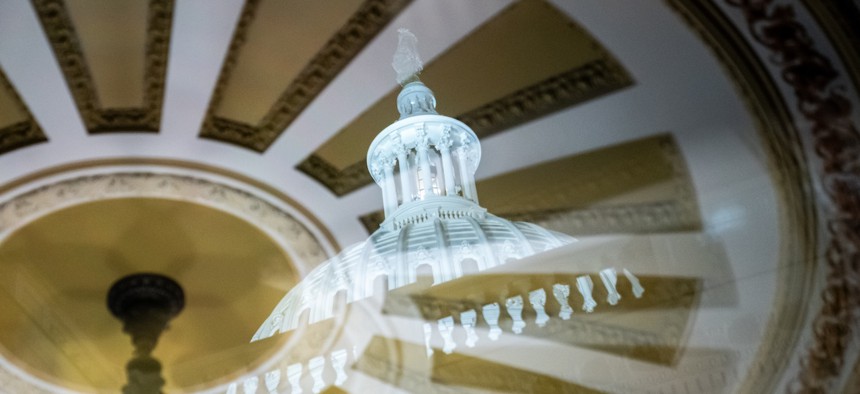
The appropriations process only continues to get longer and more convoluted. Nathan Howard/Getty Images
The continuing irresolution to fund the federal government
COMMENTARY | Congress just keeps getting worse at passing spending bills. There are consequences.
Remember 1997? The internet was still in its gee-whiz infancy. Titanic ruled the box office. IBM’s Deep Blue supercomputer beat chess grandmaster Garry Kasparov. And Congress passed annual appropriations for federal agencies on time.
For the last time.
According to the Congressional Research Service, in all but three of the 48 years since the start of the fiscal year was moved to Oct. 1, the House and Senate have failed to pass all federal spending bills in a timely manner, requiring one or more continuing resolutions to keep agencies operating. (Sometimes they can’t even accomplish that, and government shuts down for some period of time.) The last time the process worked like it’s supposed to, Bill Clinton was in the White House, Joe Biden was a scandal-plagued former presidential aspirant and Donald Trump was basking in bachelorhood after his divorce from Marla Maples.
From fiscal 1998 to fiscal 2023, temporary funding for at least some federal agencies via CRs was provided for an average of 137 days. And the appropriations process only continues to get longer and more convoluted.
This year, Congress really outdid itself. Between the beginning of the fiscal year on Oct. 1, 2023, and March 23, 2024, lawmakers passed no fewer than four CRs. Not only that, the measures were bifurcated, with spending bills divided into two groups with different expiration dates.
This all occurred in a year when it should have been relatively easy to approve appropriations measures. Congressional leaders and the White House had long since agreed on top-line spending levels. Then some of them decided to go to war over policy riders. It’s clear at this point that certain lawmakers see sabotaging the appropriations process as a worthy goal unto itself.
But there are real-world consequences to this budgetary dysfunction. Congress has now left itself only six months to finish next year’s spending bills—in an election year, when members will want to be away from Washington campaigning for as much time as possible. President Biden didn’t even issue his proposed fiscal 2025 budget until March 11, well after it ordinarily appears.
This leaves little room for proper oversight of agency operations and rational debate over spending priorities. It also leaves agencies in funding limbo for half of the fiscal year. This, in turn, makes managing government operations and executing federal programs to ensure maximum impact for taxpayers extraordinarily difficult. Where funding levels are unstable, waste and abuse are likely to follow.
It doesn’t have to be this way. Budgeting is not that difficult. It’s not one of those intractable problems, like border control and climate change, for which no political solution seems immediately within sight. The wound in the process is entirely self-inflicted. All that needs to happen to fix it is for elected officials to do their most important of jobs: deciding on government’s priorities and how much should be spent on them.
There was a time when that was the norm. It could be again. And it wouldn’t take heroic levels of bipartisanship or legislative creativity to make it happen—just a little simple math and an acknowledgement that when it comes to budget issues, nobody gets everything they want all of the time.







